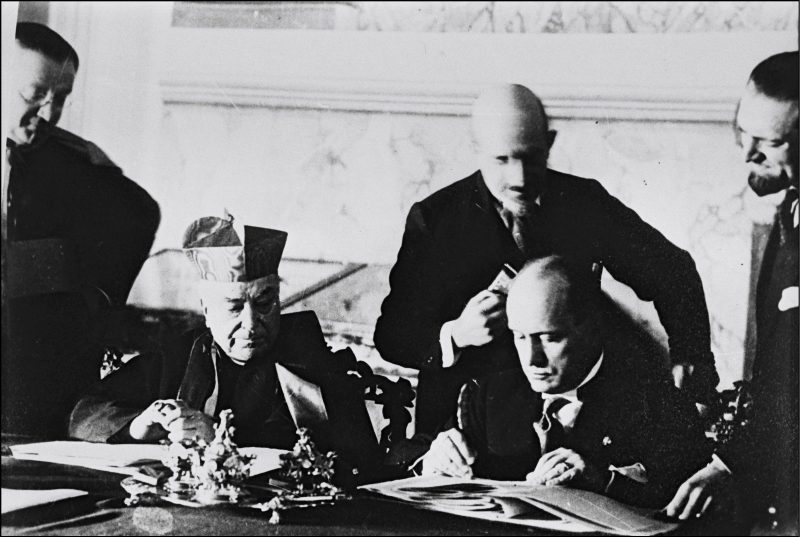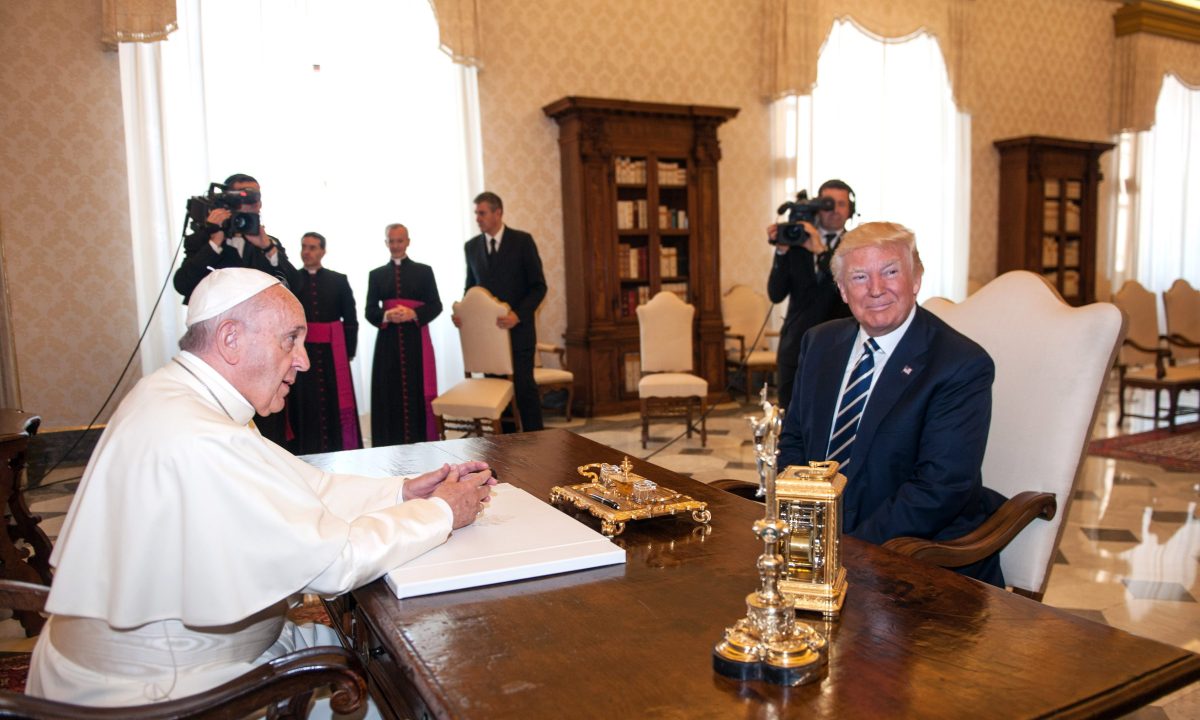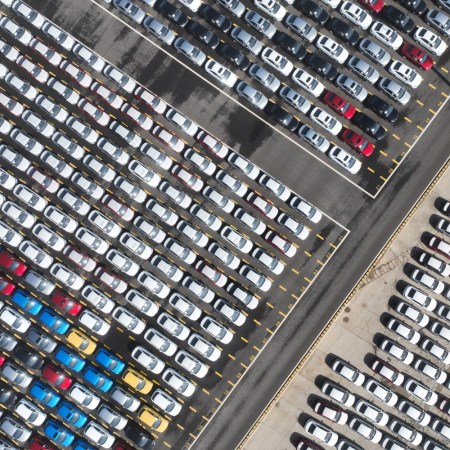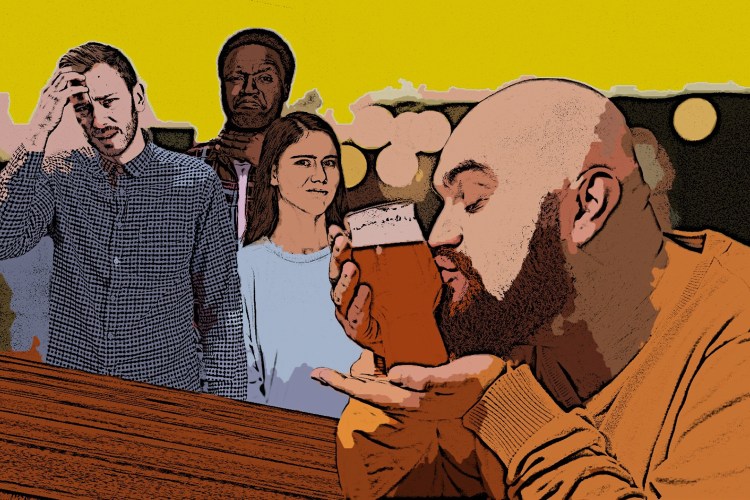Pope Francis pulls double duty: He heads a religion and a state. One of the tasks is significantly more prominent than the other. (Only about one thousand of the world’s estimated 1.2 billion Catholics actually reside in the Vatican City.) Yet for nearly two millennia, popes have struggled to reconcile these roles. Much like practicing Catholics often discover on a personal level that it can be a challenge to balance the ideals of the Church with survival in the secular world.
Understand: How a pope walks this line can have implications centuries later. Take Pope Paul III‘s decision to excommunicate King Henry VIII on December 17, 1538. Henry desperately desired a son and decided he needed a new queen to produce one. Accordingly, he wanted his marriage to Catherine annulled. It wasn’t the first time he sought a papal favor: A dispensation had been granted to allow him to marry her in the first place. (She was the widow of his brother.) An annulment seemed to make a mockery of that action. Not to mention Catherine was a Spanish princess, so any action taken against her risked offending her powerful family. Thus the decision not to annul. When Henry responded by taking charge of his land’s churches, Paul cast England’s monarch out of Catholicism.
Excommunication came at a cost, though. Nearly 500 years later, it’s estimated Britain has roughly five times more followers of the Church of England than Catholics. Which is why when Pope Francis criticizes Donald Trump or strikes a deal with China, it’s all part of a long history of struggling to reconcile relations with the outside world while ensuring the Church endures.
Replacing the Romans
Christianity began to emerge when Rome was already ascendant. (In 27 B.C.E., Julius Caesar’s adopted son Octavian took on the name Augustus and became the first Roman Emperor.) Surviving accounts of the interactions between the Romans and the followers of this new faith were generally written decades after they occurred. One thing is clear: The Romans held the power and they often wielded it. After a fire devastated Rome in the year 64 C.E., Nero apparently blamed the Christians. The Apostle Peter was among those brutally killed in retaliation.
But in roughly 312 C.E., there was a permanent shift in how Rome related to Christians. Constantine made Christianity the religion of the Roman Empire. Constantine was hardly a model Catholic—he continued to build pagan temples and statues. But the papacy had become an influential force. Indeed, the fourth century saw a new spin on Christian history, as Peter came to be viewed as the first bishop of the Church of Rome. The line of popes was officially established: It currently stands at 266 and counting.
As Christianity rose in power, Rome’s fate suffered. Romulus Augustulus was deposed in 476, completing the collapse of the Western part of the empire.
Out of the Black
Thus began the Dark Ages. Rome had fallen, but a new connective tissue emerged across Western Europe: The Catholic Church. Whereas Rome had once united much of the continent militarily and politically, now the common ground was a shared faith.
The papacy was not only growing in importance, it was also growing in territorial control. 756 saw the emergence of the Papal States. This territory in central Italy lasted over 1,000 years, frequently fluctuating in size, but surviving nonetheless. Popes often proved masters of the diplomatic quid pro quo. For instance, the King of the Franks donated land to the Papal States. In turn, Pope Leo III crowned Charlemagne emperor on December 25, 800 at St. Peter’s Basilica.
Pope Urban II demonstrated the full influence of the papacy when he gave a speech in 1095 calling for the reclamation of Jerusalem and the Holy Land. The Crusades lasted from 1096 to 1291. Their failure came at a staggering cost. It has been estimated that 1.7 million people died at a time when the planet’s total population was 300 million.
Of course, with popes addressing territorial concerns and other matters of governance, it was easy to give short shrift to actual religion.
A Strong State and Faltering Faith
During the Papal States era, some popes seemed blissfully unaware that they were religious leaders. Alexander VI had a number of children, even making one a cardinal. Pius II was an admirer of the brutal Vlad the Impaler, the inspiration for Dracula. Sergius III likely ordered the murder of one of his predecessors, Leo V.
The low point probably came during the Western Schism. Lasting from 1378 to 1417, it saw two and then three rival popes, each with their own personal Sacred College of Cardinals.
Even popes who made positive contributions rarely did so in a particularly spiritual way. Julius II was dubbed the Warrior Pope for reclaiming Papal State turf from Venice while serving from 1503 to 1513. His real legacy, however, was as a patron of the arts. He commissioned works by Raphael and Michelangelo, notably the painting of the ceiling of the Sistine Chapel.
In short: Popes often operated much like secular rulers and ambitious ones at that. Money was needed to pay for these ambitions. (Hey, the Sistine Chapel doesn’t come cheap.) What did the papacy have to offer that could be converted into quick cash?
For one, selling indulgences. If you had the money, your sins were forgivable. Faith and piety had officially become commodities that could be sold off to the highest bidder or for a quick score. And this is when the levy broke.
The Divide and the Decline
In 1517, Martin Luther posted his 95 Theses, attacking what he perceived as the corruption of the Catholic Church. This is the moment historians usually cite as the beginning of the Protestant Reformation. Suddenly, the Christian world was no longer united under the pope, as religious rebels like Luther and rulers like Henry VIII carved out new denominations of Christianity.
Indeed, popes endured some outright humiliations. After Napoleon became the French Emperor in 1804, Pope Pius VII endeavored to win his favor. In response, Napoleon not only seized the Papal States, but held Pius prisoner for five years. While the Papal States were restored after Napoleon’s fall, the reprieve was only temporary. A movement to unify the Italian peninsula eventually swept into Rome, ending the Papal States in 1870.
At the same time, the First Vatican Council put forth the doctrine of papal infallibility, asserting the words of the pope are infallible when he speaks ex cathedra (“from his chair” as supreme teacher) on matters of faith.
It was a bizarre juxtaposition. The pope suddenly had a new level of spiritual authority, yet the papacy’s sovereign reach appeared on the verge of collapse. Indeed, Pope Pius IX proclaimed himself a “prisoner of the Vatican” and essentially remained there until his death. Even more difficult choices lay ahead in the twentieth century, pitting piety against practicality.
A Friend in Fascism
Pius IX was elected Pope in 1922, the same year Benito Mussolini took Italy’s premiership. They seemed destined to clash. Violence had fueled Mussolini’s rise—his supporters killed an estimated 2,000 political opponents. Beyond this, he’d been dubbed “mangiaprete” (priest-eater) for the contempt he displayed for the Church.
When Il Duce declared himself dictator in 1925, the papacy’s days could have been numbered. Except Mussolini chose to embrace the Church, attacking abortion, homosexuality, and adultery. Mussolini signed the Lateran Treaty agreement with the Vatican in 1929. Now the Catholic Church had authority over marriage and was even compensated for property seized decades earlier. Pope Pius XI came to refer to Mussolini as the “man whom providence has sent us.”

Pius also had ties to the Führer. The Vatican signed a concordat with him in 1933. Diplomatic relations were maintained throughout World War II. The Vatican ignored atrocities, including the rounding up of Rome’s Jews. Why? It appears it was a cold calculation to ensure that, whatever occurred during the war, the Church would survive. As a statesman, this was arguably justifiable. (The Vatican was literally surrounded by an Axis nation.) As a religious leader who is supposed to be setting and upholding moral standards, however, the pope make a craven decision that is impossible to justify.
Of course, the papacy survived World War II intact, while Mussolini and Hitler did not. In the next major world conflict, popes wouldn’t be so passive.
Catholicism and Communism
Karol Józef Wojtyła was born in Poland in 1920. In 1978, he became the first non-Italian pope in 400 years. Pope John Paul II returned to Poland in 1979, where millions greeted him. He remained the pope for over 36 years, long enough to see Communist nations collapse all over Europe.
John Paul II addressed how he thought the philosophy of socialism (and by extension Communism) had gone awry, in the process making a powerful endorsement of freedom: “Man is thus reduced to a series of social relationships, and the concept of the person as the autonomous subject of moral decision disappears, the very subject whose decisions build the social order.”
This was the pope as moral leader. He was willing to make powerful enemies because it was what the faith demanded. (Which is not to say John Paul II was without sin: Under his leadership, a horrifying epidemic of child abuse within the priesthood was ignored and often enabled.)
These are two starkly opposed courses of action available to popes: Activism and accommodation. The incumbent pope has embraced both.
How Francis Faces the World
Pope Francis has articulated why morality is more precious than personal comfort or even safety with great eloquence: “Jesus is Lord, and before him physical death is like a dream: there is no reason to despair. Another death is the one to fear: that of the heart hardened by evil! Yes, we should be afraid of that one! When we feel we have a hardened heart, a heart that is hardened, allow me to say, a mummified heart, we should be afraid of this. This is the death of the heart.”
At times, Francis has taken his own advice. Like many leaders around the world, the pope’s dealings with President Trump have been volatile. Before the 2016 election Pope Francis pointedly observed, “A person who thinks only about building walls, wherever they may be, and not building bridges, is not Christian.”
Trump responded that “if and when the Vatican is attacked by ISIS, which as everyone knows is ISIS’s ultimate trophy, I can promise you that the Pope would have only wished and prayed that Donald Trump would have been President because this would not have happened.”
The president and pope had a ceasefire with a 2017 meeting in Rome. Trump later tweeted: “Honor of a lifetime to meet His Holiness Pope Francis. I leave the Vatican more determined than ever to pursue PEACE in our world.” (Trump declined to mention a gift from Francis: His 2015 encyclical on climate change and the environment.)
But soon enough Pope Francis criticized Trump again, this time for attacks on DACA: “The president of the United States presents himself as pro-life and if he is a good pro-lifer, he understands that family is the cradle of life and its unity must be protected.”
Whether you agree with Francis or not, it’s easy to see this as consistent with his view of what it means to be pope. Francis feels faith dictates he speak out on behalf of those he believes unable to defend themselves. Thus he does so, even at the risk of alienating the leader of the world’s lone superpower.
This approach is very different than his recent dealings with China, however.
Caution Over Crusades
It’s no secret that China engages in religious repression. In particular, they have targeted millions of Muslims. Right now, hundreds of thousands of Uighurs and ethnic minorities in the Xinjiang region are being imprisoned in “political re-education camps.” Former detainees report beatings for such offenses as failing to recite laws correctly.
In short: This would seem the perfect opportunity for Pope Francis to unload on President Xi like he’s done to President Trump. (Particularly since the Vatican is one of less than two dozen countries that still risk China’s anger by recognizing Taiwan.)
Instead, the Vatican struck a deal with China to reduce the tensions that have existed since China broke ties with the Holy See in 1951. This provisional agreement could pave the way for a far friendlier future.
Just as soon as Pope Francis recognizes seven bishops appointed by China.
Needless to say, this is a massive concession. (As Henry VIII learned, the Church frowns on foreign leaders deciding they can manage Catholicism just fine on their own, thanks.) While it’s uncertain how the mechanics of the arrangement will work, it appears China will have a unique amount of control over any churches on its soil. The biggest losers of the deal are China’s devout Catholics who risked punishment to keep the faith in secret, only to see the Vatican embrace China’s position. Even Francis acknowledged underground churches “will suffer.”
Pope Francis has already gone out of his way to avoid offending China, notably by declining to meet with the Dalai Lama during a visit to Rome in 2014. What’s behind this timid strategy? He may have done the math. China has a population of over 1.4 billion. It’s estimated just 10 million of them are Catholic. Thus a concession for access, oddly similar to those made by Hollywood studios and Apple, when they make compromises to their principles to gain access to the biggest market in the Pacific.
Again, we face the question: What is the pope’s highest duty? Is it to preserve the Church’s integrity or simply keep the Church alive? In the wake of the China agreement, Francis suggested compromise was invariably necessary if one wants to embrace the world: “Had Abraham demanded ideal social and political conditions before leaving his land, perhaps he would never have set out.”
Or as Francis put it in 2016: “I am a sinner… I am sure of this.”
This article was featured in the InsideHook newsletter. Sign up now.
























